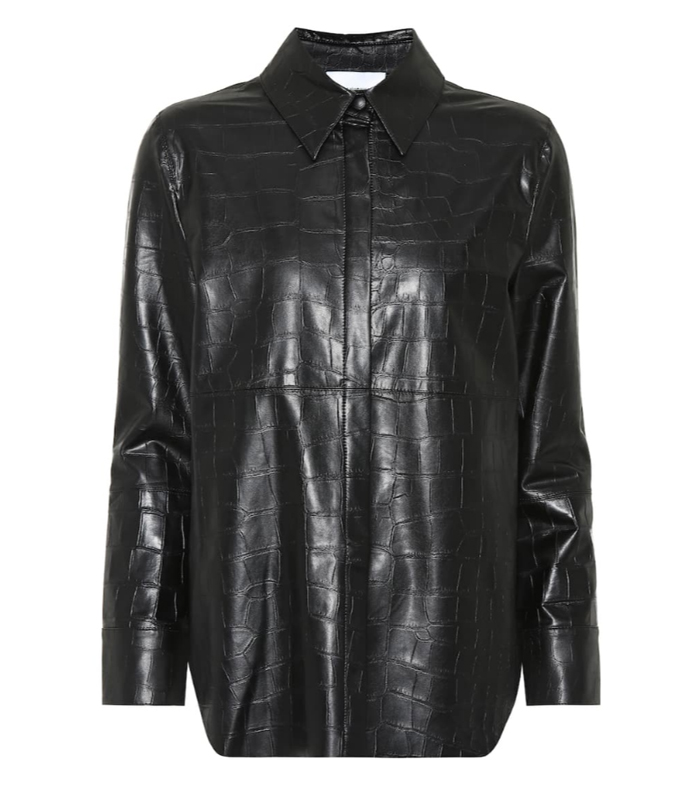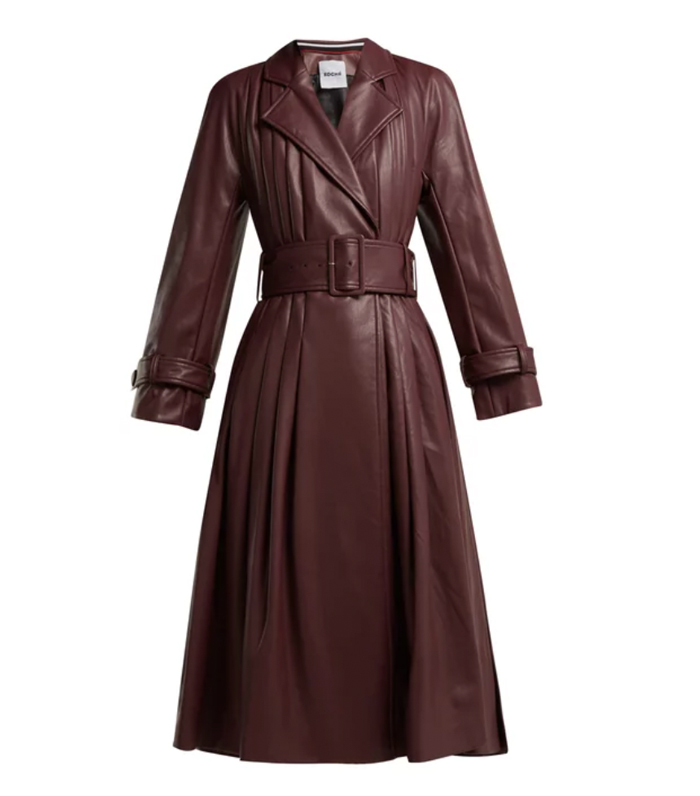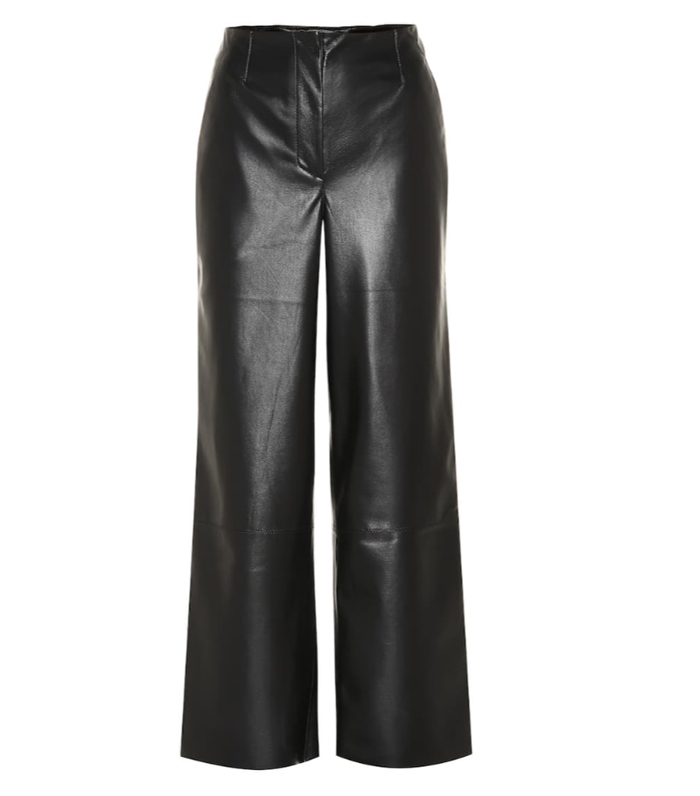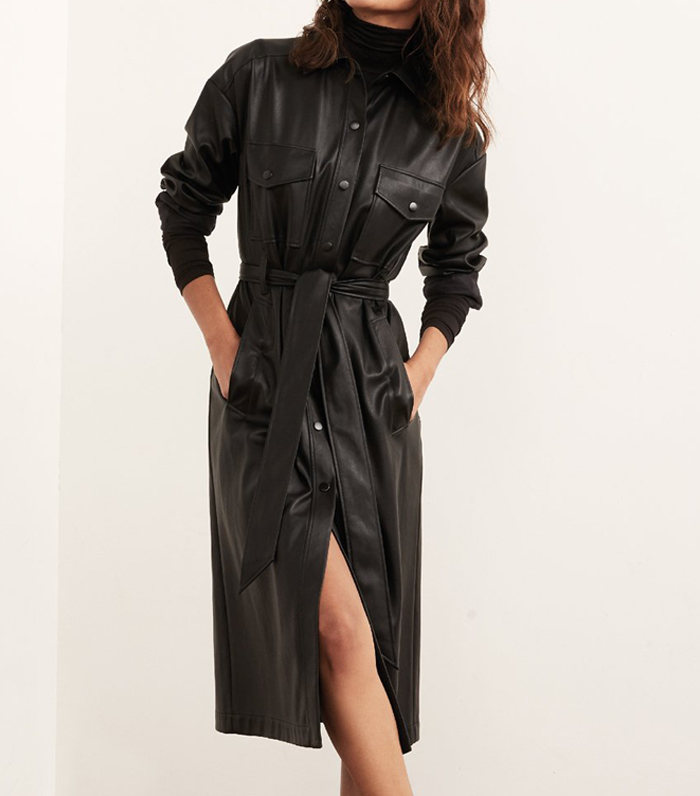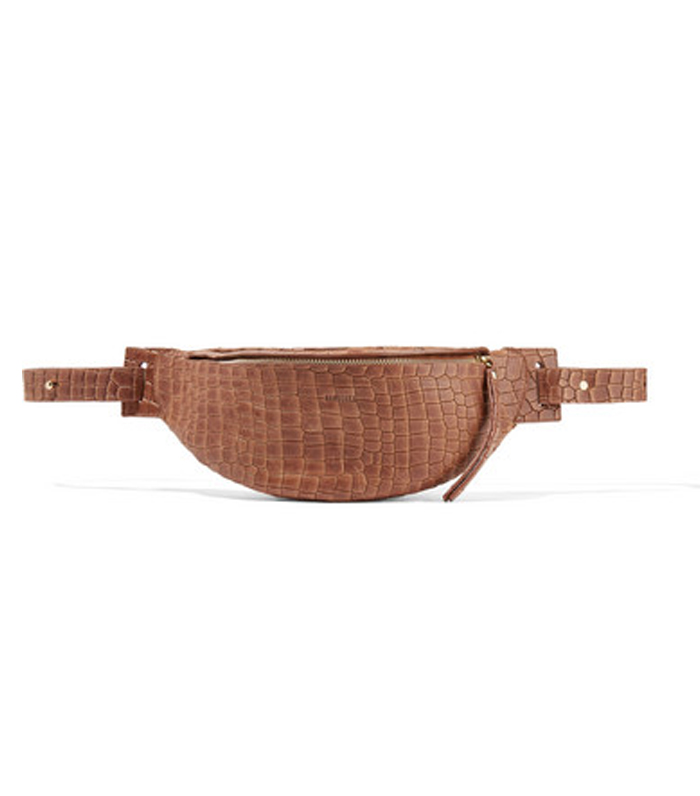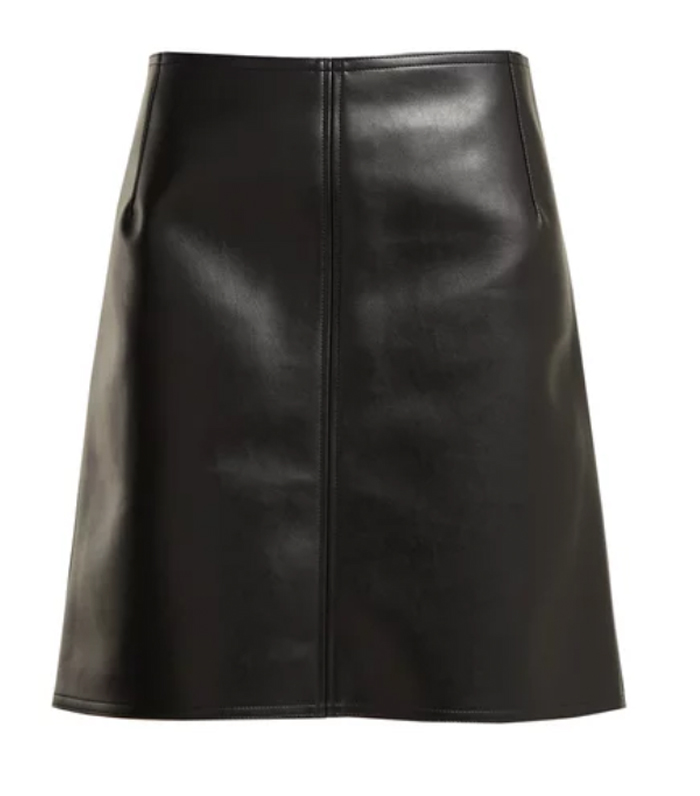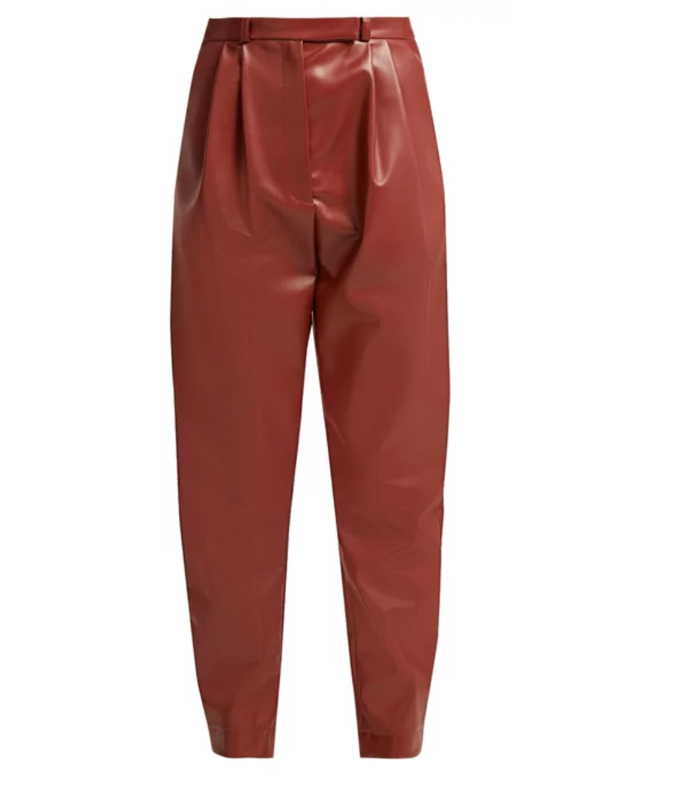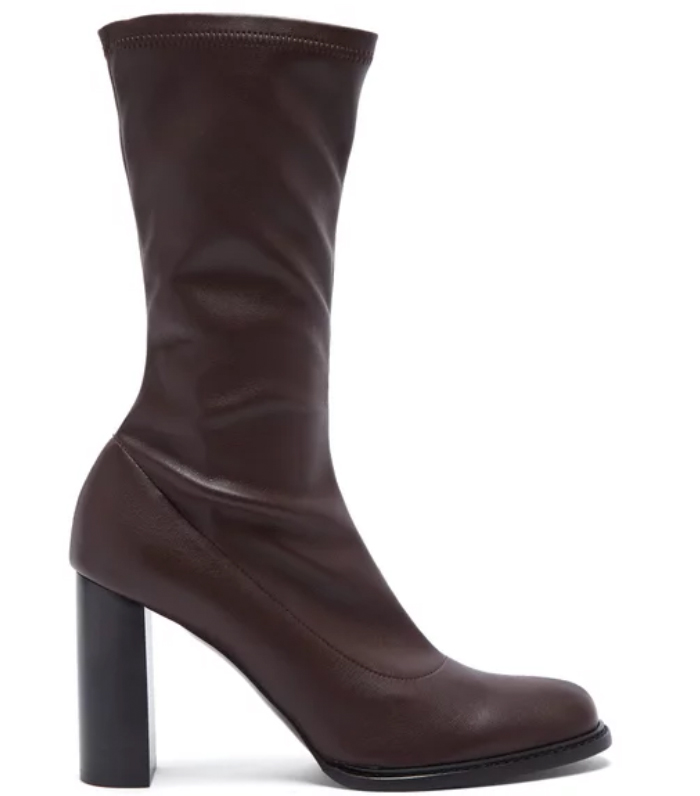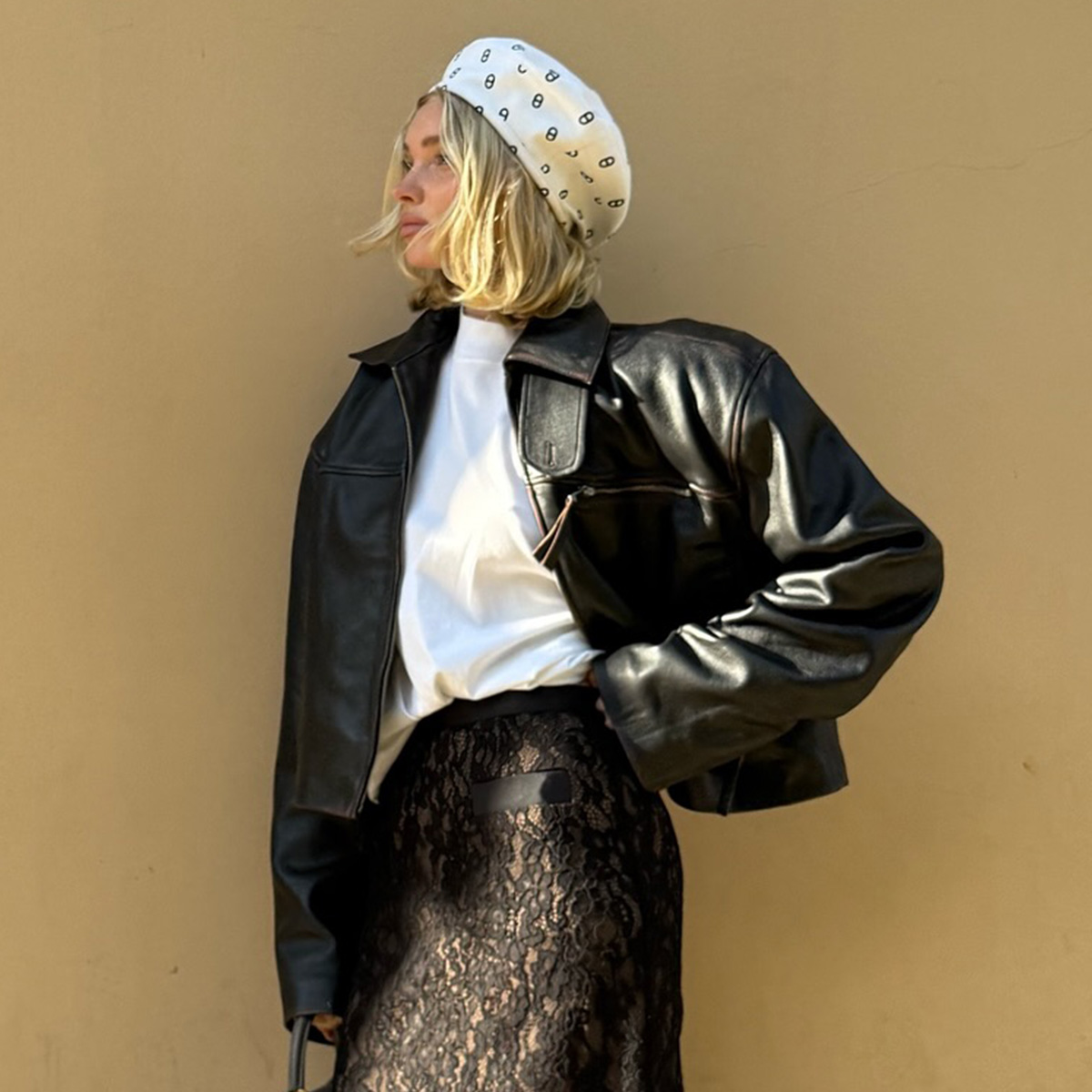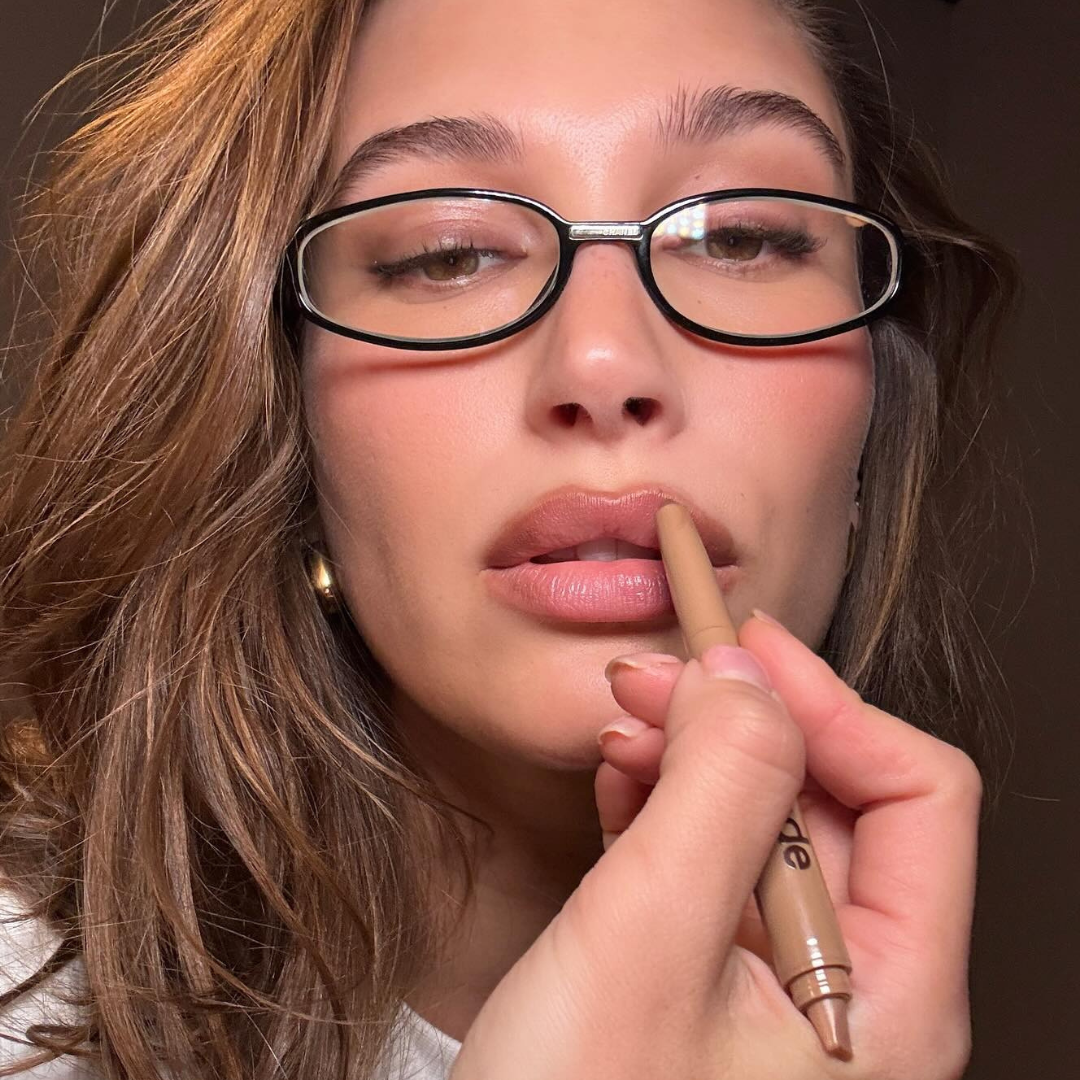Vegan Leather Is Suddenly Everywhere, But What Is It?
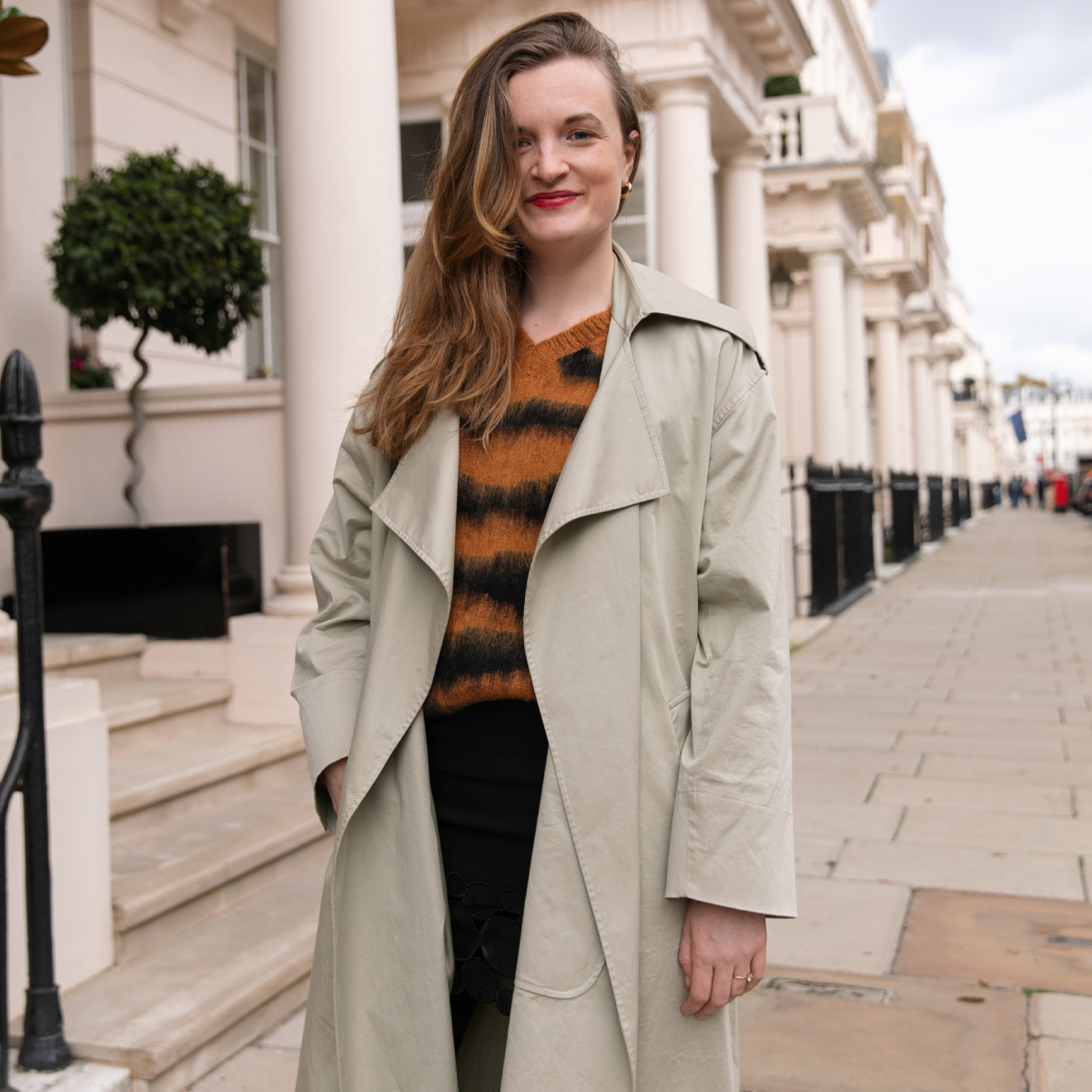
Faux leather has undergone a rebrand, and now it now goes by the name "vegan leather" in an attempt to move away from its former low-quality reputation. Veganism is a trend that went mainstream in 2018. In fact, everywhere from Wagamamas to Pizza Hut have a vegan menu, so it's hardly surprising that the fashion industry has latched onto the V-word too. Buzzy brands like Nanushka and Kitri are creating beautiful, supple fabrics that show just how far faux leather has come.
"I think there are a lot of stigmas attached to 'fake leather,' as it conjures up horrible cheap fabric, but there are a lot of options out there now, and it's not always necessary or needed to use real leather," explains Haeni Kim, founder of Kitri. "We love the look and feel of supple leather, but did not feel right about using real animal leather for our pieces. It took us a long time to find our vegan leather that looked and felt just right. There are a lot of options out there that you wouldn't believe are not leather."
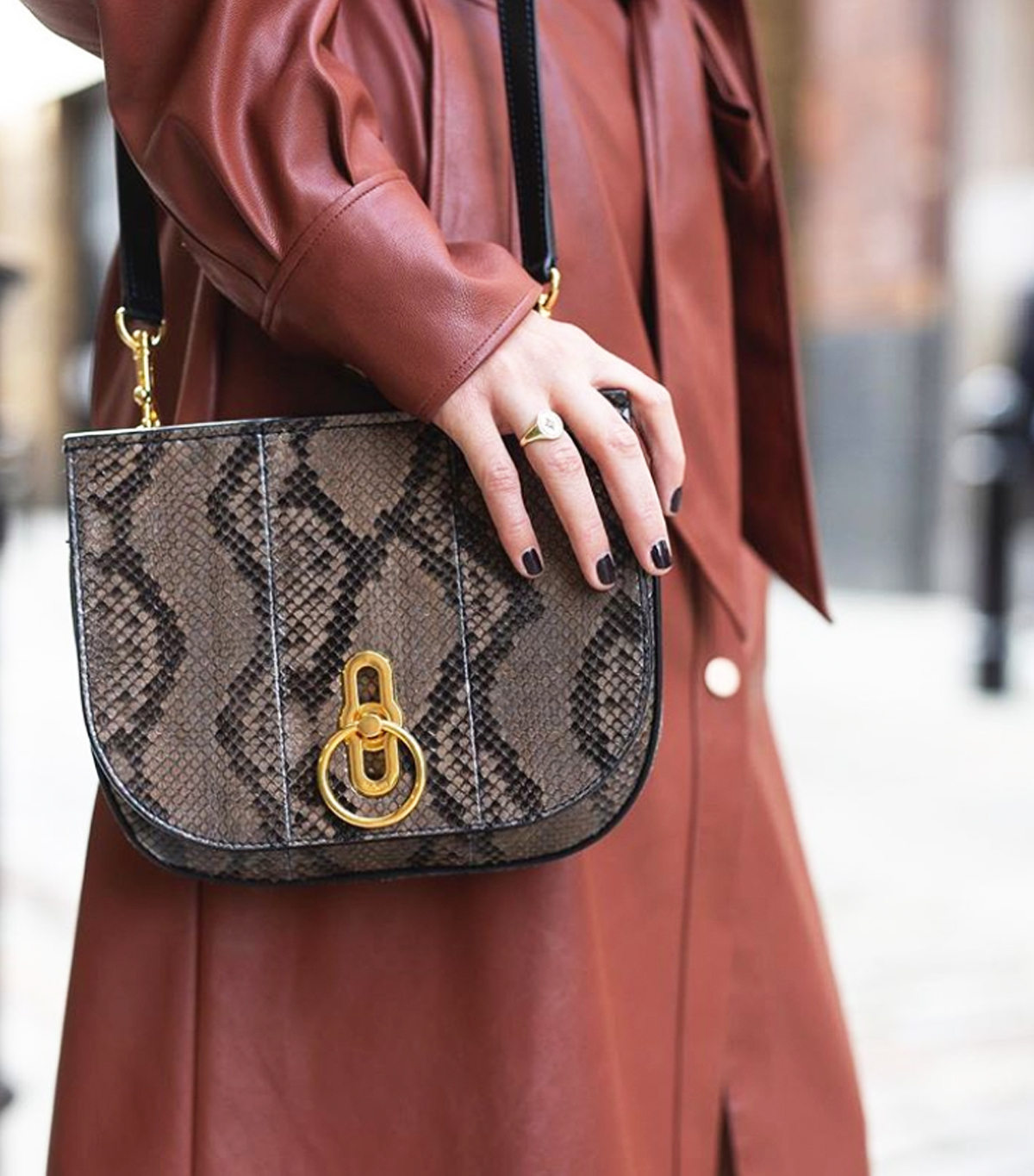
The Kitri vegan leather dress.
"We love working with vegan leather because it allows us to be a little bit more daring and playful with the silhouettes and colours," says Kim. "Good vegan leather isn't cheap, but it's nowhere near the cost of using real leather, so it is a much better price proposition for our customers too."
The price and practicality are a hit with fashion buyers: "Nanushka's fabrics astonish me due to their high quality and finish," says Lisa Aiken, fashion director at Net-a-Porter. "I particularly love its amazing vegan leathers that are machine washable at 30 degrees. It's great that there's a practical element there, meaning you can easily invest in a vegan leather shirt, dress or pants, and they're easy to maintain."

Tiffany Hsu wearing Nanushka vegan leather.
It's important to remember that while faux leather might have seen many advances over the past few years, it does—like so many popular fabrics, whether natural or synthetic—have an environmental impact. Vegan leather might be an ethical alternative to animal skins, but it still has a ways to go in order to be a completely green alternative. In fact, faux leather is made from layers of plastic.
Traditionally, "pleather" was made from polyvinyl chloride, but now it's created using polyurethane. Both of these are plastics that can't be recycled and often omit toxins during the production process. As with everything you buy, it's important to really think about what you're adding to your wardrobe and whether or not it'll be something you'll wear for years—simply throwing items away can no longer be the norm, no matter the price or finish of the garment in question.
Brands like Nanushka are working hard to tackle sustainability within production and create vegan leather that is less harmful to the environment. Sandra Sandor, founder and creative director of Nanushka, explains to Who What Wear: "Sustainability is a concept close to my heart, as it's very important that we take care of our planet and we protect it for the next generations.
"Vegan leather is part of this process. The vegan leather we are using isn't just buttery soft, but it's also sustainable because it completely cuts out the most toxic part: the tanning process. I find it important that we make our clothes long lasting and find new methods to reuse them. That's why I always try to take the most care with all my pieces."
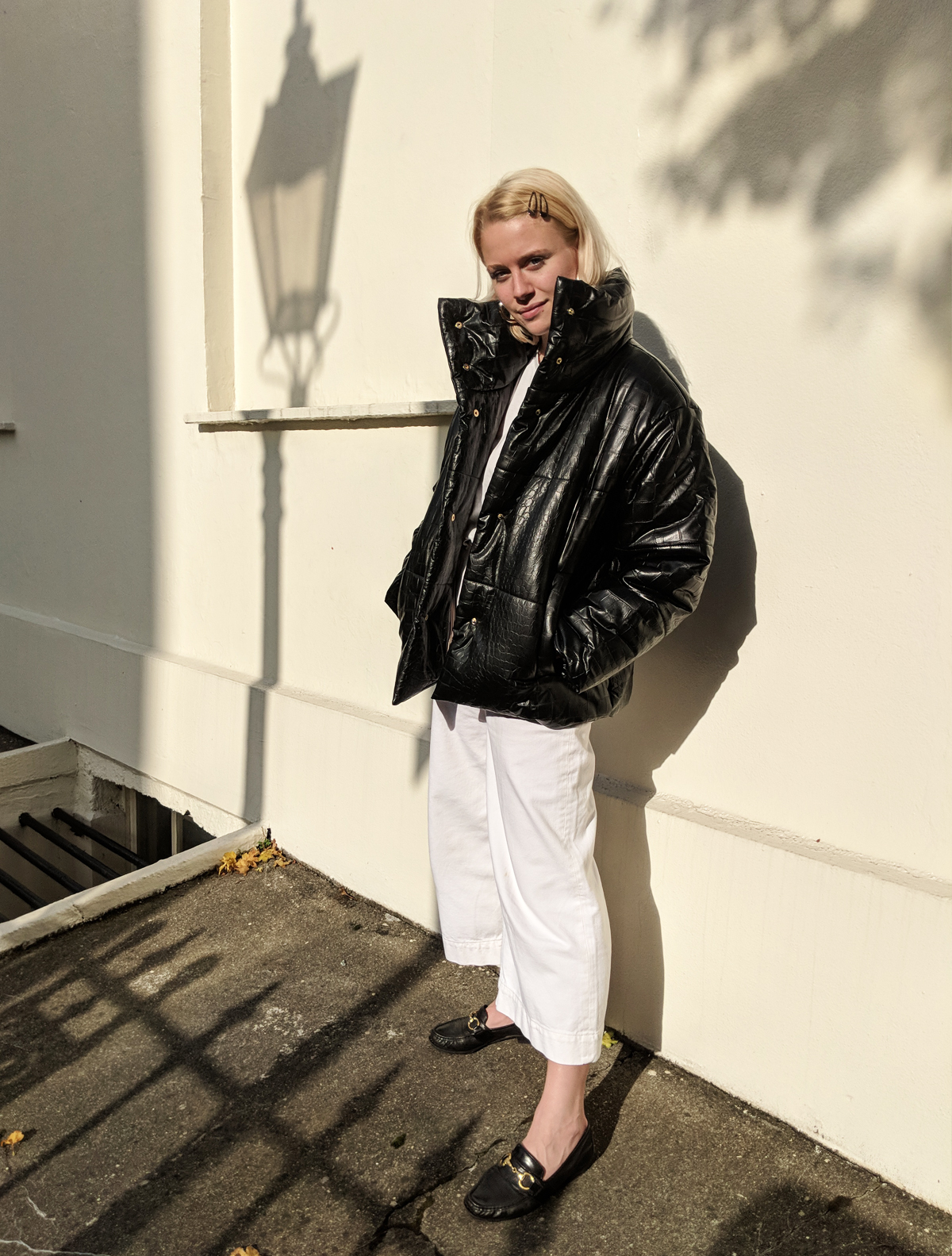
Who What Wear UK's Isabel Mundigo-Moore wearing the Nanushka vegan-leather puffer.
Shop Vegan-Leather Pieces
Next up, see our guide for dressing more sustainably.

Emma is a freelance fashion editor with over 15 years experience in industry, having worked at The Telegraph, Grazia and, most recently, British Vogue. Emma was part of the founding team of Who What Wear UK, where she worked for six years as Deputy Editor and then Editor—helping shape the team into what it is today is one of the biggest privileges of her career and she will always see herself as a Who What Wear girl, contributing to both the US and UK sites. Whether she's writing about runway trends or spotlighting emerging brands, she aims to write about fashion in a way that is democratic and doesn't promote over consumption.
